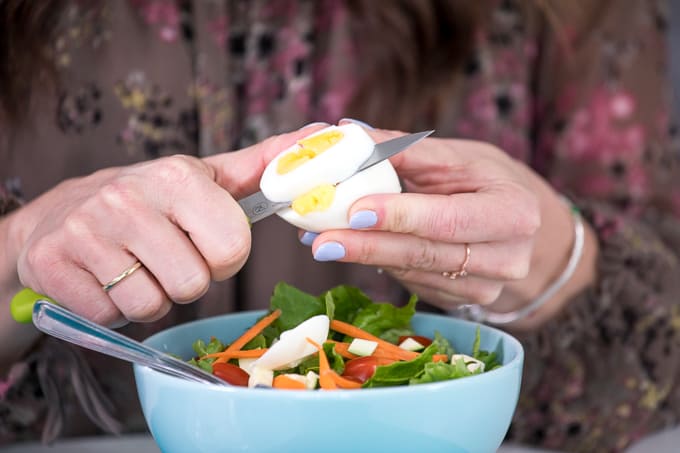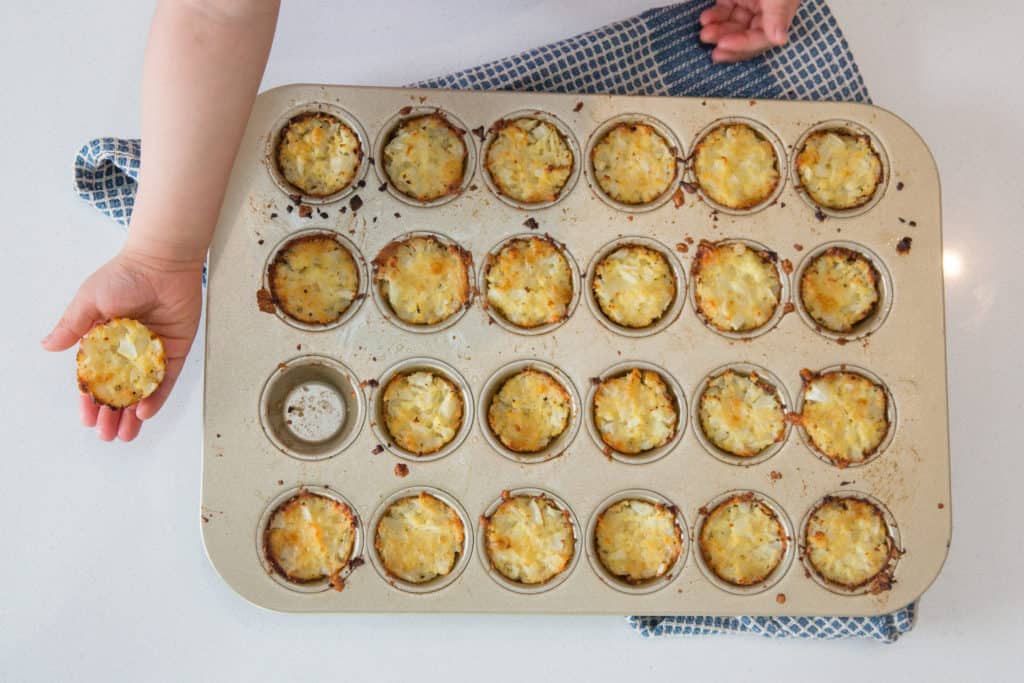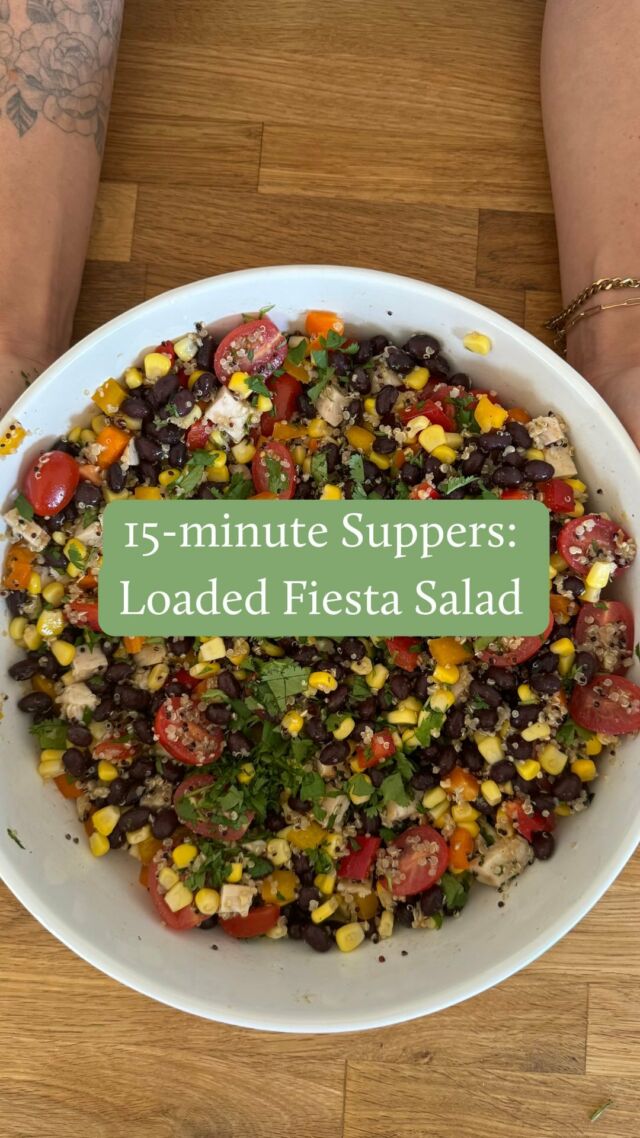Protein is important for proper growth and development. Learn why protein is so important for kids, which foods to focus on and how to ensure your child is getting enough!

This post is in partnership with my friends at Get Cracking. As always, all opinions are my own.
I’m asked about protein for kids all of the time. And what I find is that most parents OVER-estimate how much their child needs (hint: you may be surprised at how little protein they need every day!). This is where a lot of pressure can creep into mealtimes, which then can exacerbate picky eating tendencies.
Need personalized nutrition support?
Book an appointment with one of our pediatric dietitians today!
If you are offering your little one a wide variety of foods to eat, there’s a good chance they are getting enough protein through their daily meals and snacks. That’s because there’s protein in everything from meat to cheese to grains. Of course, some foods have more protein than others.

I’m here to put your mind at ease. Rest assured, your child’s protein requirements are likely being met and you are doing a great job! To help you make sure their protein intake is on track, I’ll walk you through everything you need to know about protein for your baby, toddler or child.
We’re covering all things protein for kids! Here’s a breakdown:
- What is protein?
- Why is protein important for kids?
- How much protein do kids need everyday?
- Birth to 6 months
- 6 months to 12 months
- 1 to 3 years of age
- 4 to 8 years of age
- Is your picky eater getting enough protein?
- Protein-rich foods list
- Protein-rich recipes everyone will love!

Feeding a family is challenging.
I’ve got you!
Sign up for my emailing list to get a copy of my 5 Most Popular Recipes E-Book along with a mini email series, packed with my best tips and tricks to help you along your way.
What is Protein?
There are three nutrients that provide calories (or energy) in the diet. These are carbohydrate, protein and fat. These are also called “macronutrients”. Protein is essential to our health because it’s found in every cell in the body.

Here’s some cool science: Each unique protein is made up of a series of 20 or more amino acids. Imagine making a necklace from a tray of 20 or more coloured beads. You could make a necklace with different patterns, colours and lengths of beads. That’s how proteins work too! Proteins are built with different patterns of amino acids, and there are many different proteins in foods.
When we eat protein-rich foods, they get broken down into amino acids in the body. Those amino acids are then used to help your body build muscle, make hormones and regulate immune function. Cool hey?
Of the 20 amino acids, there are nine that are deemed ‘essential.’ We need to get these essential amino acids from foods, because they cannot be made by the body. It’s important to eat a variety of foods, so we get a good variety of different amino acids that our body needs.
Why is protein is important for kids?
Protein provides building blocks for the growth and repair of the cells in muscles, organs, skin, and nails. The body also uses protein to make enzymes and hormones. Protein also helps repair and make cells, and is an important part of the immune system, to protect the body against viruses and bacteria. For children, protein promotes proper growth and development, so it’s vital to get enough every day.
How much protein do kids need?
Babies from birth to 6 months. At this stage,babiesneed at least 9 grams of protein per day. Babies are in big-time growth mode and require sufficient protein to meet their body’s needs. From 0-6 months, babies get all of the protein they need from breast milk or formula.
Babies from 7 to 12 months: At this age, babies require at least 11 grams of protein per day. It can come from a combination of breastmilk and/or formula and the solid foods that they are eating. If it sometimes feels like more food ends up in the highchair or on the floor than it does in baby’s mouth, that’s normal! Rest assured that they are still getting protein from breastmilk/formula, and some from food, too.

Toddlers from 1 to 3 years: As your child gets bigger, protein requirements increase. At this stage, toddlers need at least 13 grams of protein per day. Of course, that’s just a minimum – they can get more than 13 grams! If they are not big eaters, don’t worry: 13 grams of protein equals just 1 egg and a small serving of Greek yogurt. Or it could be a couple of tablespoons of meat, some milk, and a small piece of cheese. It doesn’t take much to meet their needs.
Children age 4 to 8 years. At this stage, children require at least 19 grams of protein per day. As with toddlers, it’s fine if they get more than this amount. Serve a variety of protein-rich foods at meals and snacks.
Is your picky eater getting enough protein?
I often hear parents say that their child doesn’t like meat or fish, and they are worried about protein intake. Rest assured, meat is not the only source of protein! I mentioned at the start of this post, kids actually need less protein than most parents think, and even eating some peanut butter, eggs, cheese and chickpeas throughout the day can provide ample protein. Eggs happen every single day in our house, whether it’s scrambled, poached, in frittata form, as French toast or in one of my blender muffins! This helps me to have peace of mind that a big chunk of my kids’ protein needs (among other essential nutrients) are met.

There’s a good chance that even if your child doesn’t like a few foods, they will certainly enjoy at least some of the protein-rich foods found on the list below. Don’t worry too much! Continue to offer a variety of protein-rich foods with meals and snacks, so there is something your child enjoys.
And be creative! For example, if your child loves scrambled eggs, think of them beyond the breakfast plate. They are just as yummy and easy to serve for lunch or dinner. And while hummus, nuts and seeds are often though of as snacks, you can include them as meal options too. Sprinkle seeds on oatmeal, add nuts to pasta or use nut butter for a sandwich and serve hummus swirled into rice or pasta.
Protein-rich foods for kids
Ensure that you offer any of these nutrient-dense and protein-rich foods with your child’s meals and snacks:
- Eggs
- Beans and lentils
- Lean meats
- Poultry
- Low-mercury fish
- Milk or soy beverage
- Yogurt
- Cheese and cottage cheese
- Tofu and tempeh
- Peanuts, nuts and seeds
There is a small amount of protein in vegetables, fruit, beans and grains, but these are more known for their fiber and carbohydrates. They have some protein, but not enough to meet daily needs on their own.
Did you know? Almost half the protein in the egg comes from the yolk (along with most of the nutrients), so it’s helpful to eat the full egg for all its protein benefits!
If you like the numbers, this chart is for you!
| Food | Serving size | Protein (g) |
| Meat, poultry or fish, cooked | 2.5 oz. | 18-23 g |
| Greek yogurt | ¾ cup | 14-18 g |
| Cheese | ½ cup shredded | 12-14 g |
| Eggs | 2 large | 13 g |
| Beans or lentils | ¾ cup | 12-15 g |
| Firm tofu | ½ cup | 11 g |
| Plain yogurt | ¾ cup | 6-10 g |
| Cow’s milk or soy beverage | 1 cup | 8 g |
| Nuts or seeds | ¼ cup | 4-8 g |
| Nut or seed spread | 2 tbsp | 4-8 g |
| Hummus | ¼ cup | 4 g |
| Bread | 1 slice | 2-5 g |
| Cooked grains (pasta, oatmeal, etc.) | ½ cup | 2-5 g |
| Fruits and vegetables | ½ cup | 1-2 g |
Protein-rich recipes everyone will love!
Here are some of our favourite protein-rich recipes (that even your pickiest of eaters will love!):
- Homemade Caulitots
- Peanut Butter and Banana Flourless Blender Muffins
- Easy Egg Burrito Bake
- Easy Weeknight Veggie Frittata
- Sweet and Salty Chocolate Chip Lentil Granola Bars
- Double Chocolate Chia Protein Bites
- Delicious Plant-Based Protein Recipes to Try
And here are 5 easy ways to include eggs in your family menu plan!









Comments
Rose says
What if your toddler doesnt like eggs, nor cheese, nor beef, nor yogurt, and he is allergic to peanuts? Doesnt eat at daycare either… any ideas? Thanks
Sarah Remmer says
Hi Rose, this is so frustrating! Please reach out to my team so we can help you figure out what works for your little one. You can contact us at https://www.sarahremmer.com/contact/